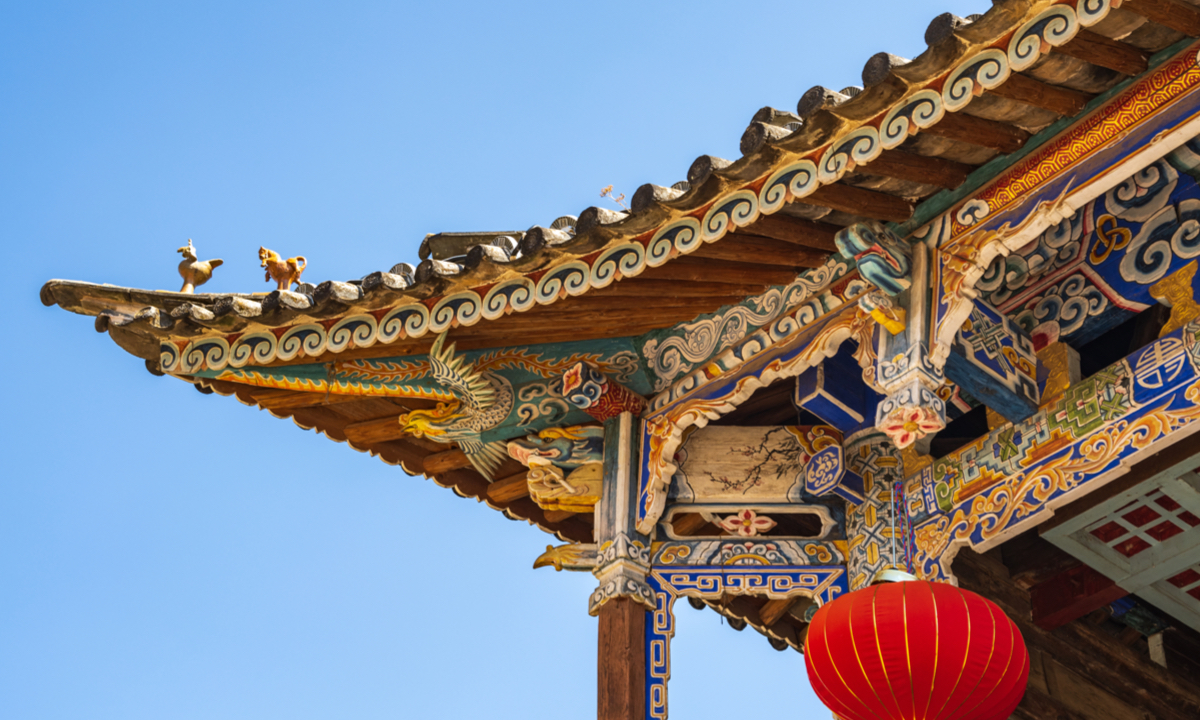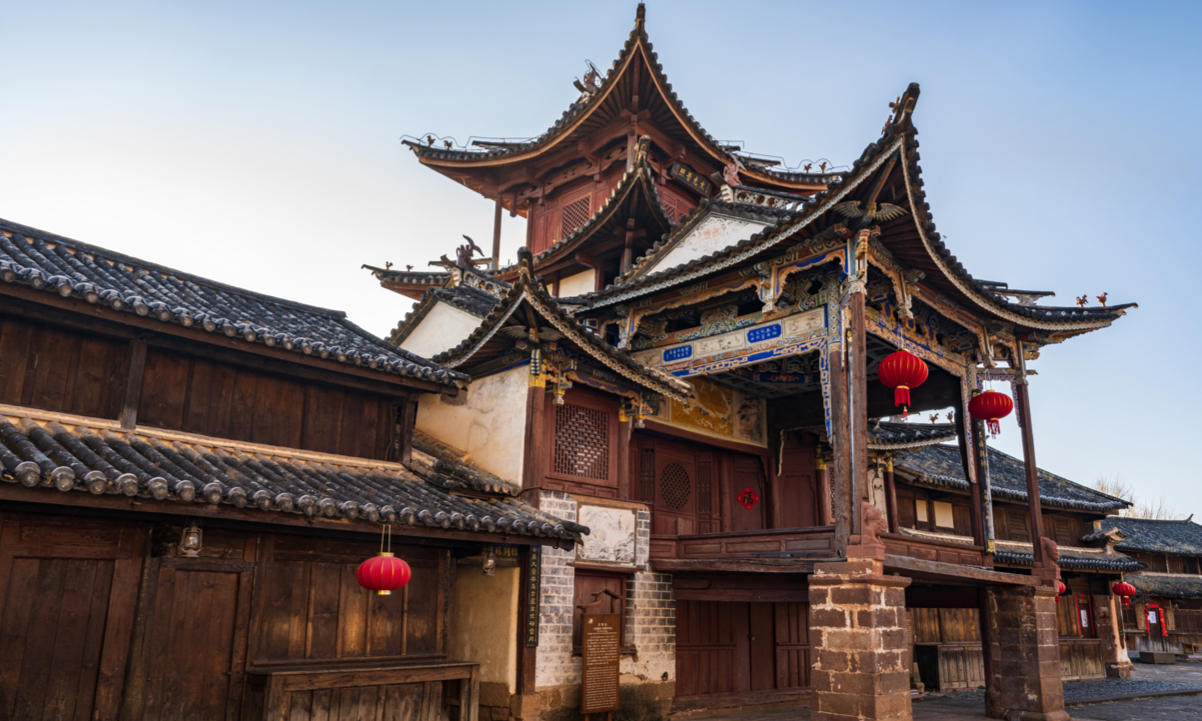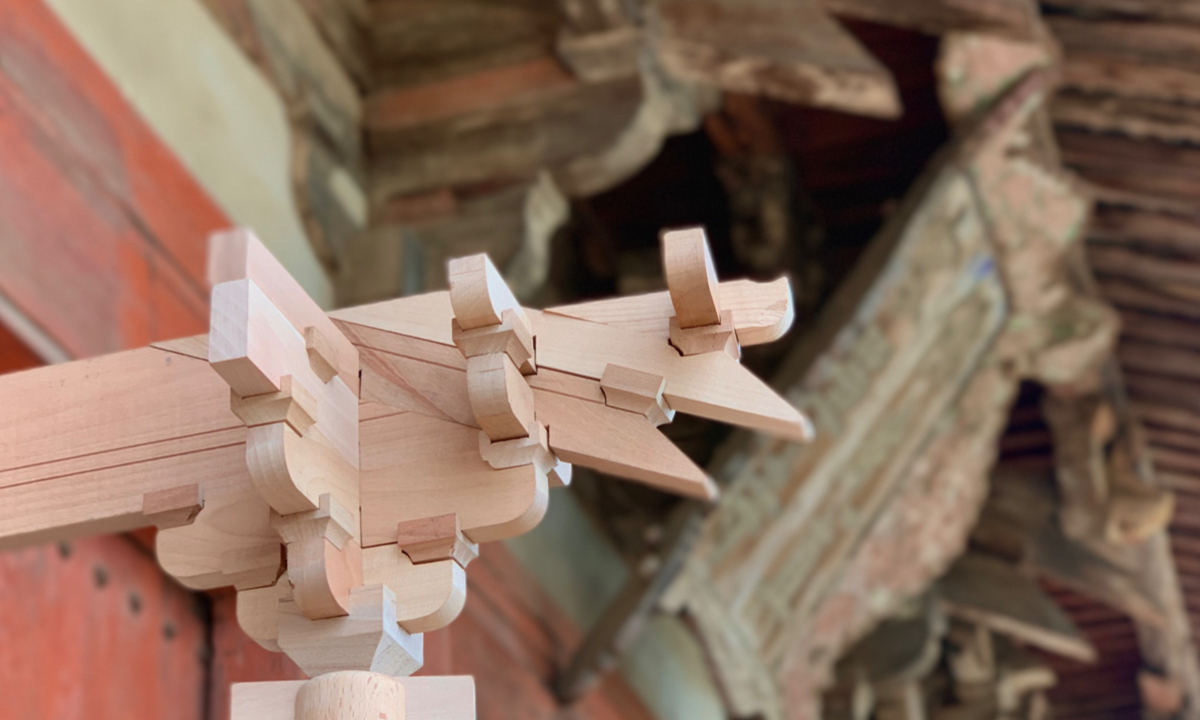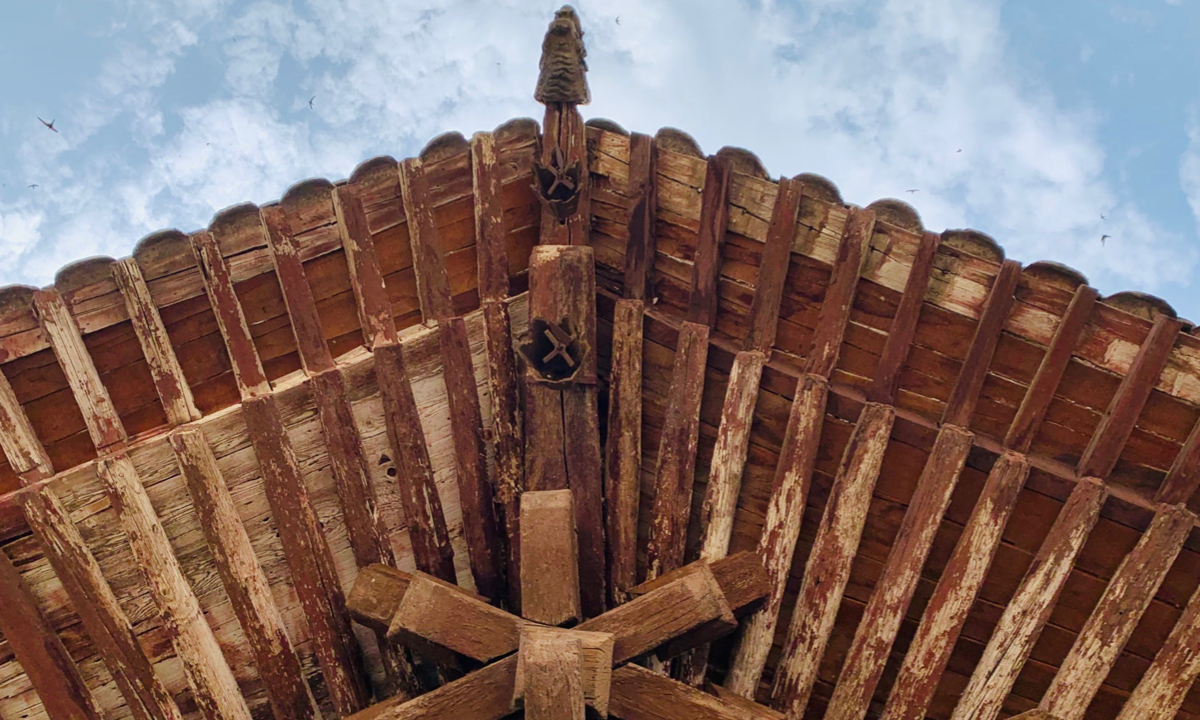
The unique ancient wooden dougong structure Photos: VCG and IC

An ancient-style building at the Shaxi historical village in Dali, Yunnan Province Photo: VCG and IC

The unique ancient wooden dougong structure Photos: VCG and IC

The unique ancient wooden dougong structure Photos: VCG and IC
Editor's Note:
Ancient books are not only treasure houses for ancient thought and the crystallization of the wisdom of sages, but also important carriers of the inheritance of a civilization and the collective memory of a nation. Understanding this importance, the Chinese central government recently issued a set of guidelines focusing on strengthening the preservation and publication of ancient books. As the saying goes, "the best way to keep something alive is to make it part of people's daily lives." In this series, the Global Times talk with several people who are currently working to come up with innovative ways to bring China's ancient works into the lives of readers today. The four stories are:
Bringing ancient books 'alive' with delicious dishes,
Young Chinese create original music inspired by ancient texts,
China's wooden building ingenuity still alive today and
Shanghai team on mission to revive fashion found in ancient books.
A thousand years ago during the Northern Song Dynasty (960-1127), the ancient book
Yingzao Fashi, one of China's earliest known building manuals, specified for the first time in China the construction standards for traditional wooden buildings.
Now, this legacy has been transformed into poetic cultural expressions seen in new Chinese buildings. Behind this trend is the result of the common belief of generations of Chinese architects who aim to incorporate the wisdom from ancient books into today's designs.
Ancient guide"For a Chinese architect, to have never come across the book
Yingzao Fashi is like a mathematician who doesn't know how to add, subtract, multiply or divide," Xu Yitao, an architectural archaeologist who has been dedicated for more than two decades to the study of ancient Chinese buildings, told the Global Times.
The earliest and the most comprehensive record on buildings in China, the book was written by Li Jie, a Northern Song Dynasty civil engineer and architect.
Xu explained that it was a very practical guide to architectural norms such as a building's appearance, size and materials during ancient times.
"Along with vivid illustrations, it specified how buildings should be made."
Although the book uses some very difficult jargon, it introduces Chinese wooden architectural designs that can still be seen today.
For instance, dougong, the interlocking wooden brackets, was essential in ancient Chinese architecture as nails were not used to hold structures together.
In an age when wooden structures were still the dominant type of building in China, dougong was a miraculous technique that held buildings together even when faced with natural disasters such as earthquakes.
Xu told the Global Times that the design was the most classic ancient Chinese building technique documented in the text, and is a point that distinguishes Chinese buildings from those in the West.
"This wooden structure is not exclusive to China, but dougong is a Chinese original, so it is 'pure and unique,'" Xu noted.
Xu explained that the originality documented in the ancient text has been studied by generations of Chinese architects including Liang Sicheng, the "father of modern Chinese architecture" from the late Qing Dynasty (1644-1911).
According to Xu, the Northern Song Dynasty version of
Yingzao Fashi was lost and the one used today is an "replica of the Song version that includes the original content and modern and contemporary scholars's improved and updated views on the ancient book."
"What we need to do is to transform the ancient text's cultural value to social value that can benefit us today and serve the public," Xu noted.
Into the modern ageEchoing Xu's thoughts, Guo Long, an architect who strives to decode the modernization of ancient Chinese building designs, represents the industry's younger generation of architects who see the wisdom in ancient architecture books and believe it can be creatively transformed into China's cultural symbol even though some old techniques appear to be incompatible with today's building systems.
Taking the classic dougong technique as an example, he told the Global Times that the China National Pavilion for the World Expo 2010 Shanghai and the Chongqing Guotai Art Center are good representatives of the transformation of ancient wisdom.
The Chinese house at the Shanghai World Expo was a large red dougong structure that delivered an intricate yet stable appearance to symbolize an ancient hat that is a symbol of Chinese wisdom.
The art center in Chongqing also adopts the red dougong presentation. It is lovingly referred to as the "chopstick building" by citizens due to its weaving brackets. The building is now a major landmark that hosts various cultural events.
"Such culture-oriented transformation in architecture is an expression of China's long-standing poetic lifestyle. They are carriers of China's cultural confidence," Guo noted.
"In the future, we have to use this ancient wisdom to create 'New Chinese buildings.' In other words, internationally connected new designs that demonstrate the cultural density of China. This is difficult, but much more sophisticated than adding Chinese elements to modern buildings," Xu emphasized.







